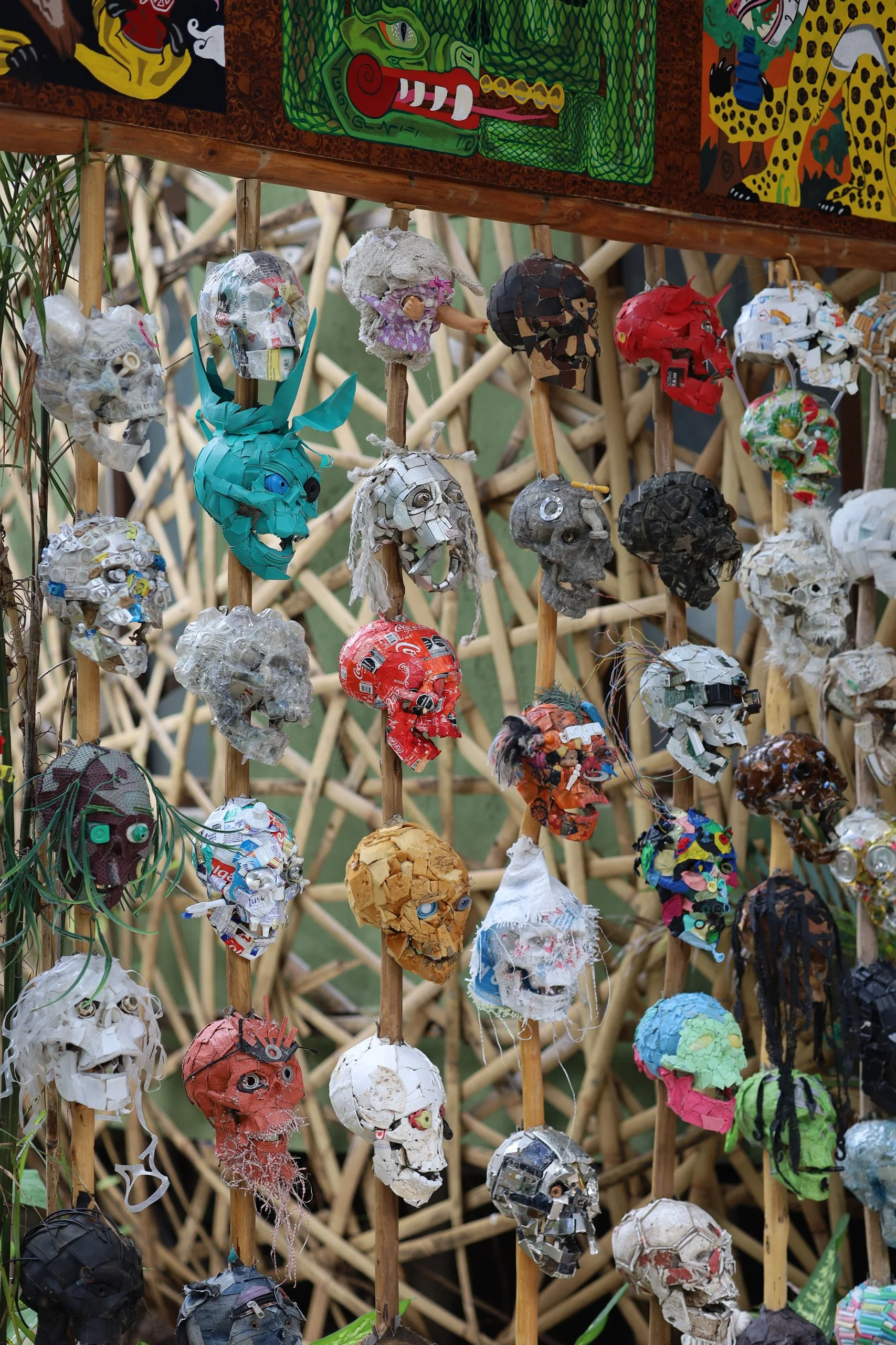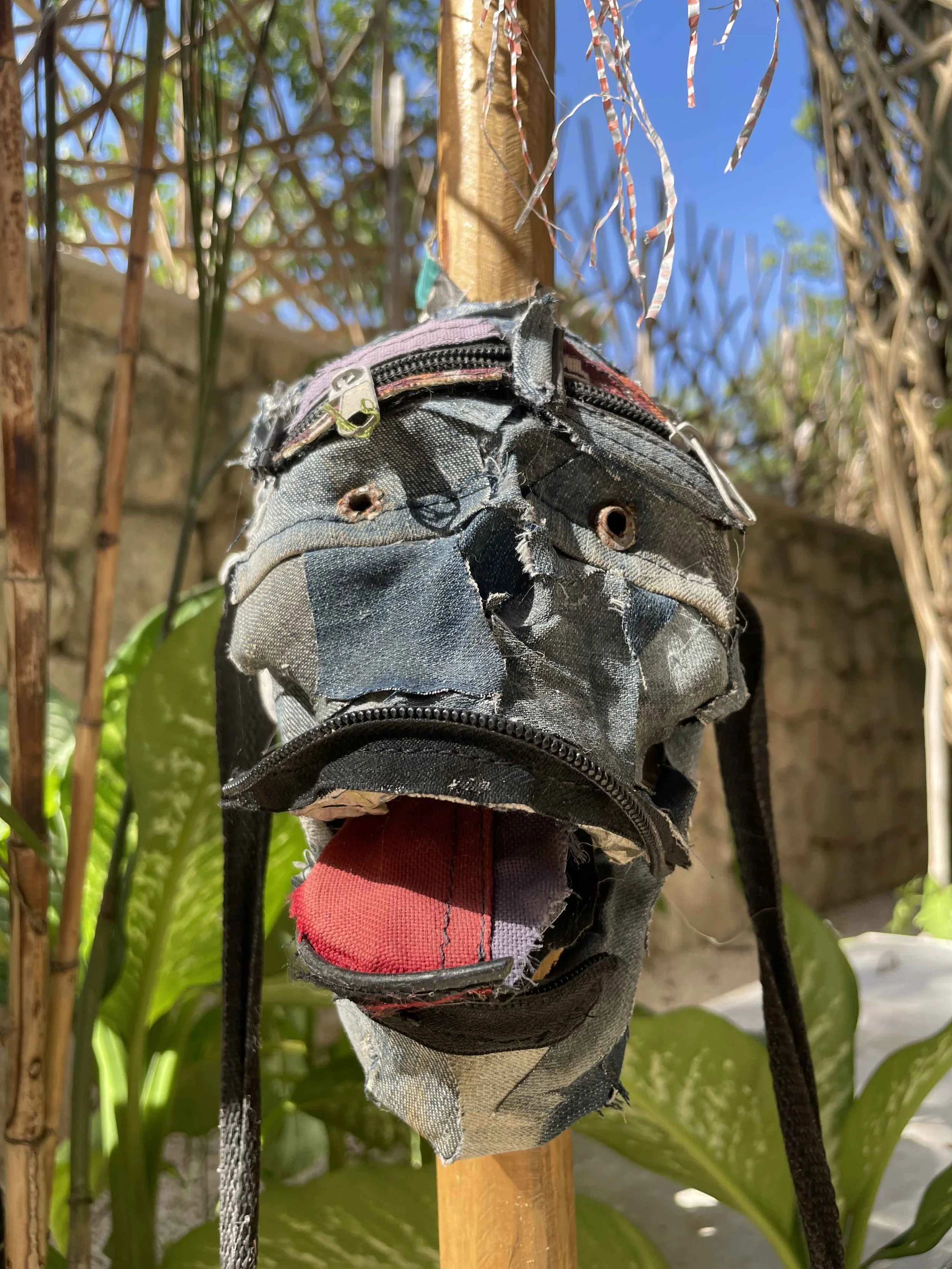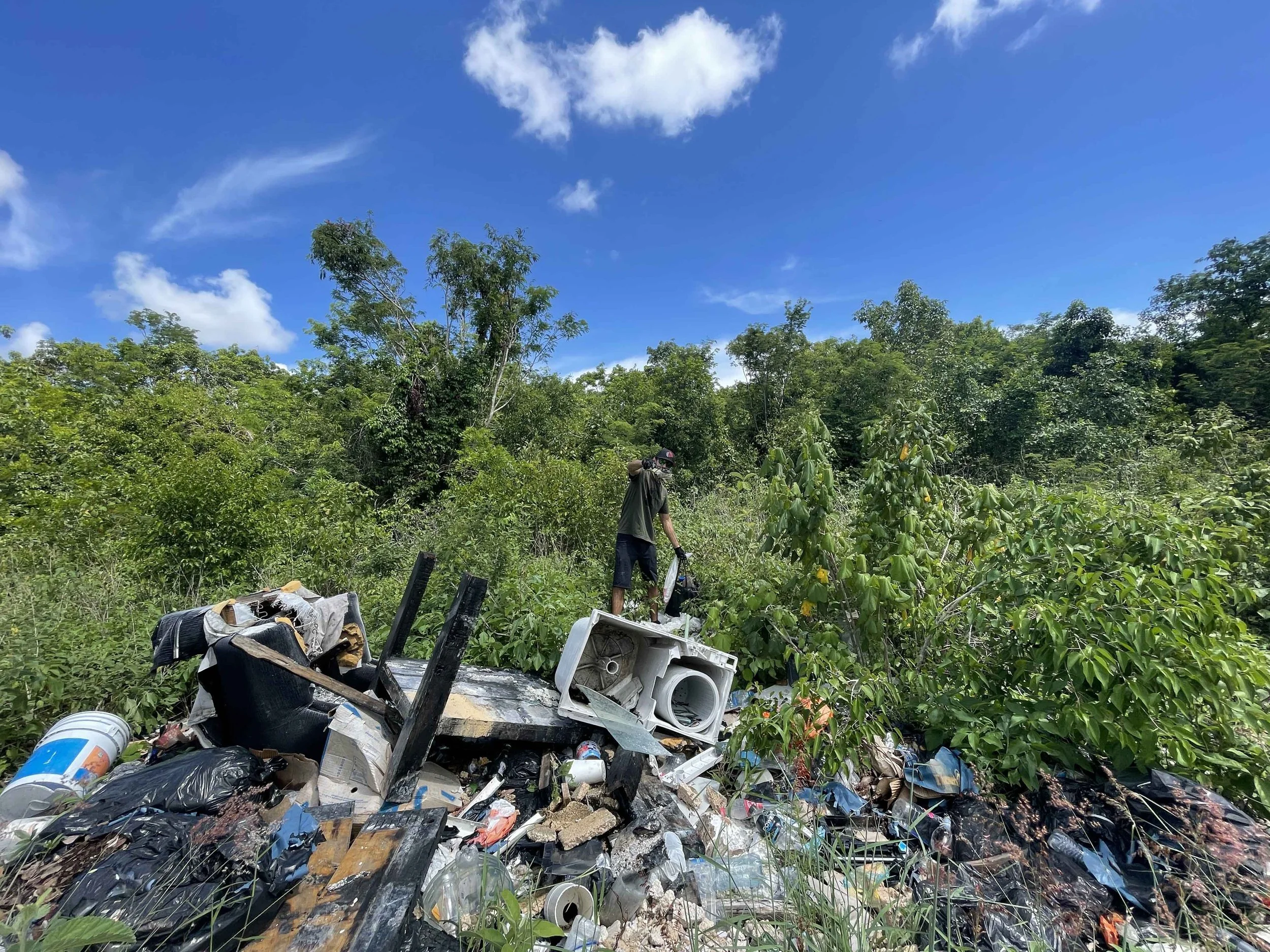Re:Tzompantli: Turning Trash into Consciousness in Tulum
In Tulum, where nature and creativity coexist in delicate balance, art has become more than an expression: it’s a call to action.
Few works embody this truth as powerfully as Re:Tzompantli, an installation by Mexican painter, muralist, and illustrator Arturo Zúñiga Vega, created to confront one of Tulum’s most pressing challenges: waste and overconsumption.
From Trash to Art
For three months, Arturo walked the streets, beaches, and jungle paths of Tulum, not with a brush or canvas, but with gloves and a bag. He collected discarded plastic, glass, and single-use objects, fragments of modern life, and transformed them into a haunting and beautiful statement: a collection of 212 skull sculptures made entirely from trash.
“Our incessant consumption of non-recyclable materials without proper waste disposal practices has led to devastating environmental damage,” says Zúñiga. “Each piece of garbage used in this installation will take hundreds, if not thousands, of years to decompose.”
A Modern Interpretation of an Ancient Symbol
“row of skulls.”
The project’s name, Re:Tzompantli, draws from the classical Nahuatl word tzompantli
In Mesoamerican cultures, the Aztecs and Mayans used tzompantlis as symbolic structures to display human skulls, representing sacrifice, reverence, and the cycle of life and death.
By reimagining this ancient concept, Arturo gives new meaning to what humanity sacrifices today: our environment. The “Re” prefix stands for recycle, merging the old and the new into a message that is both ancestral and urgently modern.
The Tzompantli of Chichen is dedicated to the dead, and can be found in different Mayan Archaeological sites.
From Private Installation to Public Awareness
The project began as a private installation of 32 skulls at KAN Tulum Hotel, built from trash personally collected in town. Its raw honesty and visual power resonated so deeply that it expanded to over 250 skulls, eventually exhibited publicly in Aldea Zamá, one of Tulum’s most vibrant urban spaces.
Displayed first in a gallery and later as a street art installation in Aldea Zamá Park, Re:Tzompantli became a gathering point — a reflection of collective responsibility and a reminder that beauty can emerge from even the most uncomfortable truths.
Art, Technology, and Impermanence
In an unexpected twist, each skull was also minted as an NFT on the Ethereum blockchain, bridging environmental awareness with digital innovation. While the NFT movement has since quieted, the gesture reflects the project’s underlying theme: the intersection of permanence and decay, creation and destruction, technology and nature.
Even if the digital project has faded, the physical installation : and the idea it represents, continues to resonate. It invites viewers to reconsider the material footprint of their everyday lives, to question the cost of convenience, and to imagine a cleaner, more conscious Tulum.
A Message that Endures
In Re:Tzompantli, trash becomes a mirror, art becomes activism, and culture becomes continuity.
Zúñiga’s installation doesn’t just decorate space, it transforms perception, urging residents, travelers, and developers alike to take responsibility for the paradise they inhabit.
Because in Tulum, as in life, what we choose to leave behind defines the world we create next.
Arturo Zuñiga picking trash from Tulum’s nature to form art.
























